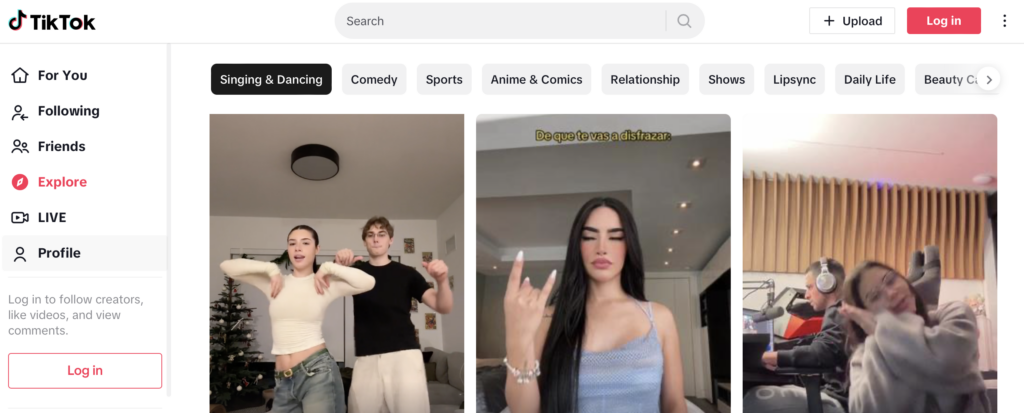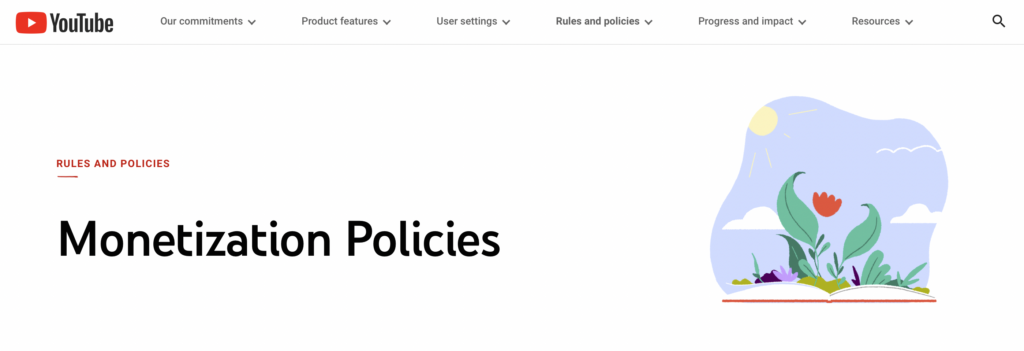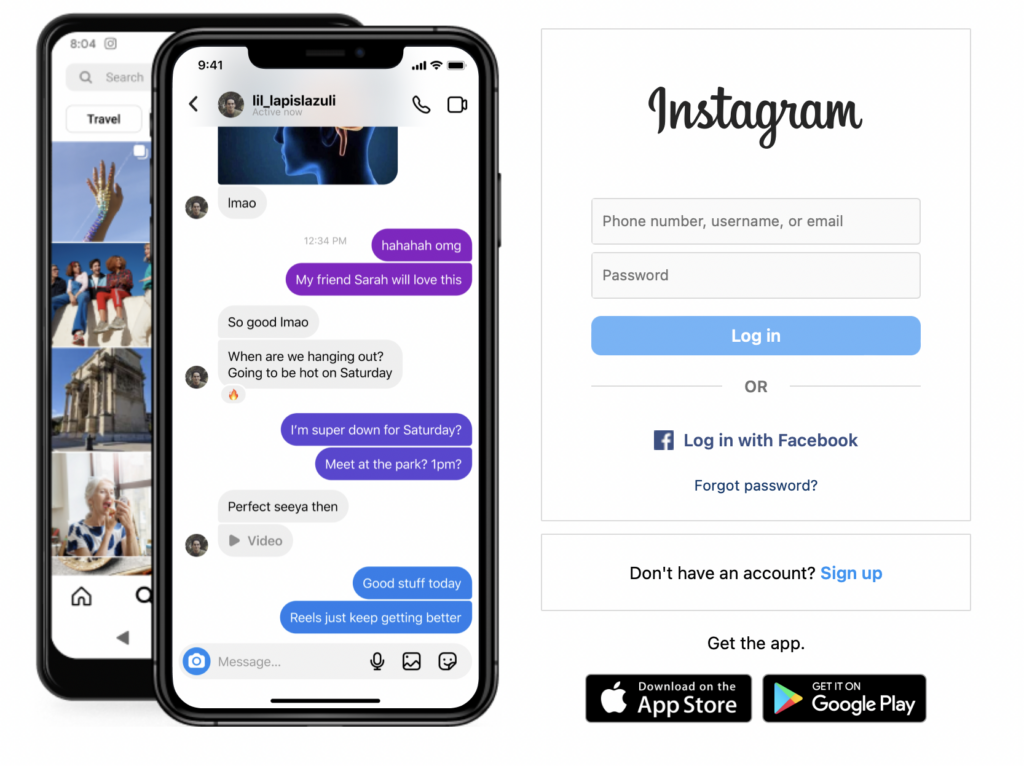AFFILIATE MARKETING
Which Social Media Platform Pays the Most in 2024? 5 Options Compared

Influencers want to make the most of their efforts to earn money online. They may be active on multiple social media platforms without knowing what financially moves the needle forward. Each platform has its own payout system, but which social media platform pays the most?
Don’t focus your content creation efforts on something that won’t earn you a solid return on investment. You don’t need viral content to earn money on social media. Here’s what you need to know to get paid on the top social media platforms.
Let’s get started.
If you want to make more money, you must create engaging content for your audience. Beyond that, you need to seek out the right social media platforms. But the question is: what social media platforms pay the most?
TikTok

According to a survey by Epidemic Sound, the platform that generates the most revenue for the average content creator is actually a relative newcomer: TikTok. They found that TikTok presents a wonderful opportunity for people to earn more, especially at lower income levels.
You might be surprised at just how much you can earn creating short videos for TikTok. Remember that high-quality videos require a serious time investment, with filming and editing requiring hours of your valuable time. When you factor in how much time you spend, you may be surprised at how little you make.
However, the average TikTok influencer makes $121,675.
That being said, the number is skewed because of the extremely high-income earners (some of whom bring in seven figures from their work). It’s more common for creators to earn $15,000 or less per year.
TikTok Creator Fund and Pay Per 1,000 Views


All of this begs the question: how does the social media platform hand out money? It all starts with TikTok’s Creator Fund. This fund was designed to pay creators for engaging content starting in 2021 with an initial investment of $200 million.
While they aren’t exactly straightforward about how much you’ll get paid for your posts, the average is about $0.02 to $0.04 per 1,000 views.
Minimum Followers and Views to Qualify
If you want to tap into the TikTok Creator Fund, you must first meet their criteria starting with your account.
Eligible accounts must be Pro accounts with a minimum of 10,000 followers. If that seems like a lot, it’s because it is. It will require you to create lots of content and start putting yourself out there.
Additionally, you’ll need at least 100,000 views in the last 30 days.
Merch
Some people don’t want to completely rely on the algorithm to put money in their bank account. And so, creating merch is a way to have greater control over your revenue and generate more money. You can open a TikTok store to sell branded merch that takes your brand out of the computer and into the real world.
Consider using print-on-demand companies to lower your initial investment and only order what sells.
YouTube


While most people are making money on TikTok, YouTube might be a better place for people wanting to become higher-income earners. This social media platform generates a decent income for someone considering doing it full-time.
According to Zip Recruiter, the average annual salary for a YouTuber is $68,714.
If your channel truly explodes, you could stand to earn significantly more. With one million subscribers, it’s estimated that you could earn just over $900,000 annually. Getting to that many followers will take a while, but it’s a great goal to strive for.
YouTube Partner Program and Payment Per Ad View


The YouTube Partner Program is the best option for those who want to make money creating content. It isn’t easy for beginners to reach the threshold where they can share in YouTube’s ad revenue, but it can be quite lucrative when you do hit it.
The criteria for access to YPP are:
- 1,000 subscribers
- 4,000 public watch hours in the last 12 months OR
- 10M valid Shorts views
Once you start to share in their ad revenue, most people find that they earn roughly $0.01 to $0.03 per view, according to Hoot Suite.
Channel Memberships
Once you qualify for the YouTube Partner Program, you can also start channel memberships. This allows people to buy into your network in exchange for premium perks like extra content. Under the umbrella of this content, you can offer several tiers for your followers to opt into, so earnings aren’t straightforward.
However, YouTube takes a 30 percent cut of the funds.


Does it surprise you to learn that Facebook isn’t the social media platform that pays the most?
Despite its status as a giant for social connection, it doesn’t have the same earning power and potential as TikTok and YouTube.
Zip Recruiter puts the average salary for Facebook creators at $80,932 but most people earn less than this pie-in-the-sky amount.
As a content creator, Facebook doesn’t necessarily pay you simply for putting content out there.
Most people earn more here via affiliate marketing and brand partnerships (which we’ll look at in a minute). However, some people can make a solid dent in their living costs based on video views, which was a new addition to the social media platform in 2023.
Video Views & Average Rates Per 1,000 Views


How much can you earn from video views on Facebook? It all concerns the ads on your videos, which can vary depending on your niche and location. However, most people see between $1 and $7 per 1,000 views of their video.
Keep in mind that seasonality also impacts your earnings potential. The holiday season often comes with higher ad spending, which means you’ll likely earn more money. Be consistent with content creation year-round so you can be prepared for these more active times of the year.
Brand Partnerships and Deals
If you’re wondering which social media platform pays the most, you might want to consider this unique revenue stream generated on Facebook. You can work directly with brands to advertise their goods and services, creating content that engages your existing audience.
It’s hard to identify exactly how much you’ll earn here because it depends on what you’re advertising, your number of followers, and the type of content you create (a post vs. a video, for example).
On average, influencers tend to charge right around $600 for sponsored posts.


Next up on our list of which social media platform pays the most is Instagram. If you can create content via videos and photos, this is one of the biggest social media platforms that pay on the market today. It’s estimated that people earn about $17 per hour or $34,624 per year.
Instagram allows you to earn money in several key ways: in-stream ads on IGTV videos, sponsored posts, and badges are all options. It’s a flexible way to earn money and diversify your income streams all in one convenient social media app.
Be sure to check out our article on how to make money on Instagram without followers here.
Ads Revenue on Videos Instead of Views of Photos


Once you start creating content on some of these popular social media platforms, you may get faster at its creation. Churning out high-quality videos regularly will boost your follower count and prime you for increased ad revenue.
Like most other platforms here, this top social media platform doesn’t have its rates set in stone. It varies depending on number of followers, type of content, time of the year, geographic region, and other complex factors.
That said, most current social media superstars earn about $0.01 to $0.05 per view.
Sponsored Posts Boost Instagram Income
Much like sponsored content on Facebook, Meta (the parent company including Instagram and Facebook) also allows you to create the same sponsored posts on Instagram. You can create exclusive content for a brand deal that pays based on the number of followers you have.
Worried that you might not make anything as a micro-influencer? Fear not! Even smaller accounts can make some money on sponsored videos and posts. With 500 to 10,000 followers, you might earn roughly $10 to $100 per post.
Once you clear this initial hurdle, accounts with 10,000 followers or more can earn approximately $500 per post.
Badges
Unlike other social media platforms, Instagram allows creators to give their audience recognition for supporting them by buying badges. When you go live on Instagram, your audience can purchase badges for $0.99, $1.99, and $4.99.
In turn, they get to have the telltale hearts next to their name on your livestream, letting everyone know that they supported your content creation.
The best part is that you earn the entire amount of your badges purchased, minus any applicable taxes and fees.
Twitter/X


Last but not least, Twitter (X) is worth mentioning among the best social media platforms for content creators to earn. And while their monetization program isn’t as robust as the others, you can still tap into their Twitter Tip Jar feature to earn some money from your short posts.
But because the platform’s payment system is still relatively new, there isn’t much data out there to tell you how much you could earn. But if you have a solid following, you should find a way to monetize content via X instead of letting that hard work of building a following go to waste.
Twitter Tip Jar Feature


Which social media platform pays the most? While X doesn’t come in at the top of the list, it does have an interesting way of paying content creators. You can enable the Twitter Tip Jar feature that allows your followers to financially support you via a tip.
It may not be the most reliable way to earn a living as a content creator, but it’s great if Twitter is your social media platform of choice.
Sponsored Posts
Of course, you can also earn money from sponsored posts. Whether they want video creators or simply short and sweet tweets like X is known for, companies are willing to pay for those who have a great (and engaged) following.
A sponsored tweet usually earns somewhere in the ballpark of $0.50 to $1.50 per 1,000 followers.
So, which social media platform pays the most?
The answer may depend on the content you’re interested in producing, ranging from video content to high-quality images to sponsored tweets. While TikTok and its Creator Fund are some of the most popular ways to earn money, other platforms might be worth a second look.
Remember that choosing one doesn’t have to be mutually exclusive to joining others. If you have the time to spare, you can create content for several platforms, expanding your opportunities to earn money for your efforts.
Where will you double down on your efforts to monetize your social media following?
AFFILIATE MARKETING
Cut Costs, Not Features with This Microsoft Bundle Deal

Disclosure: Our goal is to feature products and services that we think you’ll find interesting and useful. If you purchase them, Entrepreneur may get a small share of the revenue from the sale from our commerce partners.
Software subscription fees can quickly add up, and for small-business owners, entrepreneurs, or freelancers, these costs can eat into profits. Businesses spend approximately 29% of their IT budgets on software, according to a 2023 survey by Gartner.
For business professionals who are looking to streamline workflow without paying steep subscription fees, the Ultimate 2019 Microsoft Bundle might be the perfect solution. For just $71.94 (regularly $927), this comprehensive four-part bundle offers Microsoft Office Professional Plus 2019, Windows 11 Pro, Project 2019, and Visio 2019.
While it’s not the newest version of Microsoft’s software, it can deliver tremendous value for anyone seeking tools to manage their business, boost productivity, and work efficiently. The bundle offers a lifetime license, meaning you’ll get all the functionality you need without the recurring costs associated with subscription services like Microsoft 365.
However, it does come with Windows 11 Pro, which includes the recent AI updates. Windows 11 Pro delivers a modern, intuitive interface with enhanced security features such as biometric login and Smart App Control, making it ideal for professionals who prioritize privacy and usability. It’s also equipped with tools that support multitasking, such as Snap Layouts and Virtual Desktops.
For companies looking to reduce overhead without compromising essential functionality, making a one-time purchase of slightly older software is a smart financial move. This includes Office’s most popular productivity tools, Word, Excel, PowerPoint, and Outlook.
Project 2019 is a must-have for anyone who is managing large or small projects. It helps track tasks, timelines, and resources, making it easier to stay on top of deadlines and ensure your team moves in the right direction. Project 2019 gives you the tools to streamline processes and manage tasks efficiently.
Visio 2019 is ideal for creating professional diagrams, flowcharts, and organizational charts. It’s particularly valuable for visualizing complex data or workflows, which is essential for business owners looking to improve operational efficiency.
If you need a productivity boost without eating into savings, take a closer look at this bundle.
Get the Ultimate 2019 Microsoft Bundle with Office, Project, Visio, and Windows 11 Pro for $71.94 (regularly $927).
StackSocial prices subject to change.
AFFILIATE MARKETING
3 Trends That Will Change the Future of Entrepreneurship

Opinions expressed by Entrepreneur contributors are their own.
The most recent data from the new Global Entrepreneurship Monitor report reveals a powerful trend for the future of entrepreneurship.
Young adults, aged 18-24, had both the highest entrepreneurial activity and entrepreneurial intentions in the United States, according to the Global Entrepreneurship Monitor 2023-2024 United States Report. With similar results in 2022, this is not just a minor shift — it’s a fundamental change that could have lasting impacts on the economy and society.
I serve as the chair of the board for the Global Entrepreneurship Research Association, the entity that oversees GEM, which was founded in 1999 as a joint venture of Babson College and the London Business School. As the GEM U.S. team co-leader and a professor of entrepreneurship at Babson, I see firsthand the impact of the research created by the Global Entrepreneurship Monitor.
Here are three entrepreneurship trends from the new GEM report that are changing the landscape for the future.
Related: 21 Success Tips for Young and Aspiring Entrepreneurs
1. Young entrepreneurs on the rise
For years, entrepreneurship has been dominated by older, more experienced individuals, but this year’s report shows that the youngest adults are now at the forefront. According to GEM, 24% of 18- to 24-year-olds are engaged in some form of entrepreneurial activity, a higher rate than any other age group. What’s driving these young entrepreneurs is equally remarkable: They aren’t just starting businesses to make money; many are deeply committed to making a positive impact on society and the environment.
These young entrepreneurs make sustainability a key priority. They are more likely than entrepreneurs from older generations to build businesses with sustainability as a core focus — whether that means reducing their environmental footprint or focusing on social causes. This shift toward impact-driven entrepreneurship isn’t just anecdotal. GEM data shows a significant number of young entrepreneurs taking real, measurable steps to create businesses that align with their values. With sustainability as their north star, young entrepreneurs appear to be simultaneously pursuing societal impact as well as profits.
However, it’s not all smooth sailing. While young people are leading the way in starting businesses, they are also discontinuing them at higher rates than their older counterparts. The discontinuation rate for 18- to 24-year-olds is 15%, the highest among all age groups. This is not surprising, given the challenges of inexperience and more limited access to capital. Starting a business is tough, and sustaining one is even more challenging. But despite these hurdles, the enthusiasm and energy that young people bring to entrepreneurship are undeniable, and with the right support, this generation has the potential to drive substantial change.
2. Tech gender gap narrows
One of the most promising findings in the GEM report is the narrowing gender gap in the technology sector. Historically, tech startups have been dominated by men, but 2023 saw a record-low difference in the number of men and women starting tech companies. The gap has narrowed to just 1%, with 8% of women compared with 9% of men launching businesses in the Information and Communication Technology (ICT) sector.
This is a significant step forward and reflects broader efforts to support more women technology startups. Still, it’s important to recognize that while progress is being made, continued focus on providing equal opportunities is essential to ensuring this trend continues.
3. Optimistic outlook for Black and Hispanic entrepreneurs
Another highlight from the report is the optimistic outlook among Black and Hispanic entrepreneurs. These groups showed stronger confidence in their entrepreneurial abilities and lower fear of failure compared to their white counterparts. Black respondents, in particular, demonstrated high levels of resilience and self-assurance, which is vital in overcoming barriers faced in starting and sustaining businesses. This optimism is encouraging, but there’s still much work to be done in assuring ecosystems offer equal opportunities for all aspiring entrepreneurs, regardless of their background.
Related: I Wish I Received This Advice as a Young Entrepreneur
A promising future
Reflecting on the key findings of this year’s GEM report, it’s clear that the entrepreneurial landscape is changing in meaningful ways. The rise of young, sustainability-driven entrepreneurs signals a future where business is not only about profit but also about making a difference. These young entrepreneurs are launching businesses at a time when the world is looking for solutions to some of its most pressing challenges — climate change, poverty and economic recovery.
Yet, to fully realize the potential of this next generation, there must be more focus on addressing the challenges they encounter. Young entrepreneurs need access to the right resources — whether it’s funding, education or mentorship — to turn their innovative ideas into sustainable businesses. The narrowing gender gap in tech is encouraging, but we must continue to foster environments that support women and other underrepresented groups in entrepreneurship.
The GEM report paints a picture of an entrepreneurial future driven by purpose, diversity and innovation. But it also reminds us of the work that lies ahead in making entrepreneurship more accessible and sustainable. If we can provide young entrepreneurs with the tools and support they need, we will not only see more businesses being created — we’ll see businesses that are making a lasting, positive impact on the world.
AFFILIATE MARKETING
These Are the Top Side Hustles to Work Less, Make More Money

In the best-case scenario, a side hustle could turn into a multimillion-dollar business that generates a passive income stream — but at the very least, starting a side gig could help pay some bills.
A new survey from personal finance software company Quicken shows that almost half (43%) of Americans with a side hustle, or an extra source of income added to a primary income, make more money and clock in fewer hours overall than those without a side hustle.
The three most popular side hustles pursued by those who work less and make more money were personal assistance (20%), cooking and baking (16%), and caregiving (16%). One in five people with side hustles said they were business owners, too, selling products online or offering services like photography.
The majority of people with side hustles (82%) said starting a side gig helped them financially, and kept them from living paycheck to paycheck. Most with side hustles (57%) had savings equal to at least four months of living expenses.
The survey also found that, for younger side hustlers, a way to an extra income doubles as a path to becoming more employable. 44% of Gen Z (born between 1997 and 2012) choose to start a side hustle in order to obtain skills for long-term careers, much higher than the overall 18% of Americans who started a side hustle with the same motivation.
Quicken conducted the survey online, gathering responses from more than 1,000 Americans.
Additional research on side hustles, released in August by NEXT Insurance, showed that three out of five people bring in less than $1,000 monthly in side income, while 22% make $1,000 to $10,000 a month, and 15% make more than $10,000.
Related: Starting a Side Hustle Should Come With a Warning Label — Here’s What You Need to Know













